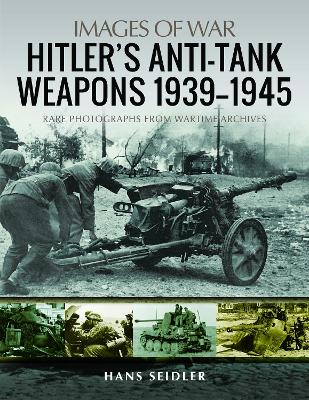Images of War
7 total works
The greatest tank battle in world history, known as Operation CITADEL, opened during the early hours of 5 July 1943, and its outcome was to decide the eventual outcome of the war on the Eastern Front. A highly collectable addition to the Images of War series, Battle of Kursk 1943 is a superbly illustrated account of this pivotal battle of the war on the Eastern Front, when the Germans threw 900,000 men and 2,500 tanks against 1,300,000 soldiers and 3,000 tanks of the Red Army in a savage battle of attrition.Unlike many pictorial accounts of the war on the Eastern Front, the book draws upon both German and Russian archive material, all of which are rare or unpublished. The images convey the true scale, intensity and horror of the fighting at Kursk, as the Germans tried in vain to batter their way through the Soviet defensive systems. The battle climaxed at the village of Prokhorovka, which involved some 1,000 tanks fighting each other at point-blank range.During this vicious two week battle the Red Army dealt the Panzerwaffe a severe battering from which the German war effort was never to recover. The Battle of Kursk finally ended the myth of German invincibility.
Founded in 1922 the Hitler Youth movement was the second oldest Nazi group. Comprising male youths aged 14 - 18, by December 1936 membership stood at over 5 million. During the Second World War the role of Hitlerjugend evolved from assisting with the postal, train and fire services into full war fighting. Recruits went into units such as the elite 12th SS Panzer-Division 'Hitlerjugend' and we see graphic images of this Waffen-SS force in action both on the Eastern and Western fronts. Even as the Nazi cause faced inevitable defeat these units fought with fanatical and disturbing bravery and after defeat in May 1945 elements carried out guerrilla actions in the Bavarian and Austrian mountains. The reader will find much original material on this legendary but distasteful Nazi organisation.
Hitler's Wehrmacht and SS units will be remembered for their aggressive Blitzkrieg' tactics. But, as the war progressed, the Germans, recognising the offensive capability of armoured warfare, developed an impressive range of anti-tank warfare weaponry and munitions.
Using many rare unpublished images this Images of War book covers the full Nazi anti-armour capability from the 3.7cm Pak 35, 5cm Pak 38 and 7.5cm Pak 40 to the versatile 8.8cm Flak feared by the Allies. Also featured are the half-tracks and converted Panzers that pulled or mounted these weapons and carried forward observers and reconnaissance elements.
Later hand-held anti-tank weapons came into service and were effective and economic against Allied armour. The Panzer faust, with its shaped charge warhead, became the first disposable anti-tank weapon in history.
This comprehensive book shows this formidable range of weapons in action from Poland in 1939, through North Africa and the Eastern Front to the final collapse in 1945.
Using many rare unpublished images this Images of War book covers the full Nazi anti-armour capability from the 3.7cm Pak 35, 5cm Pak 38 and 7.5cm Pak 40 to the versatile 8.8cm Flak feared by the Allies. Also featured are the half-tracks and converted Panzers that pulled or mounted these weapons and carried forward observers and reconnaissance elements.
Later hand-held anti-tank weapons came into service and were effective and economic against Allied armour. The Panzer faust, with its shaped charge warhead, became the first disposable anti-tank weapon in history.
This comprehensive book shows this formidable range of weapons in action from Poland in 1939, through North Africa and the Eastern Front to the final collapse in 1945.

